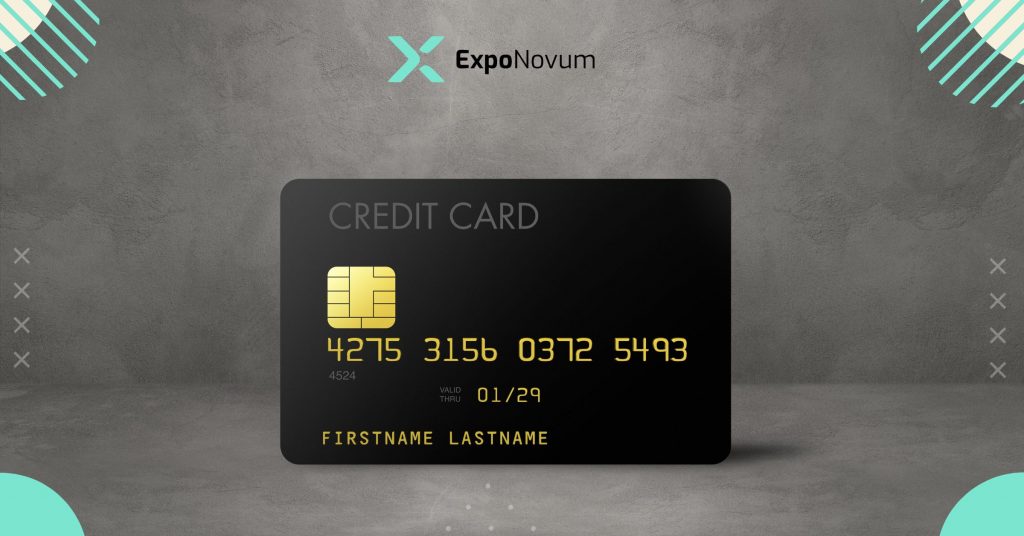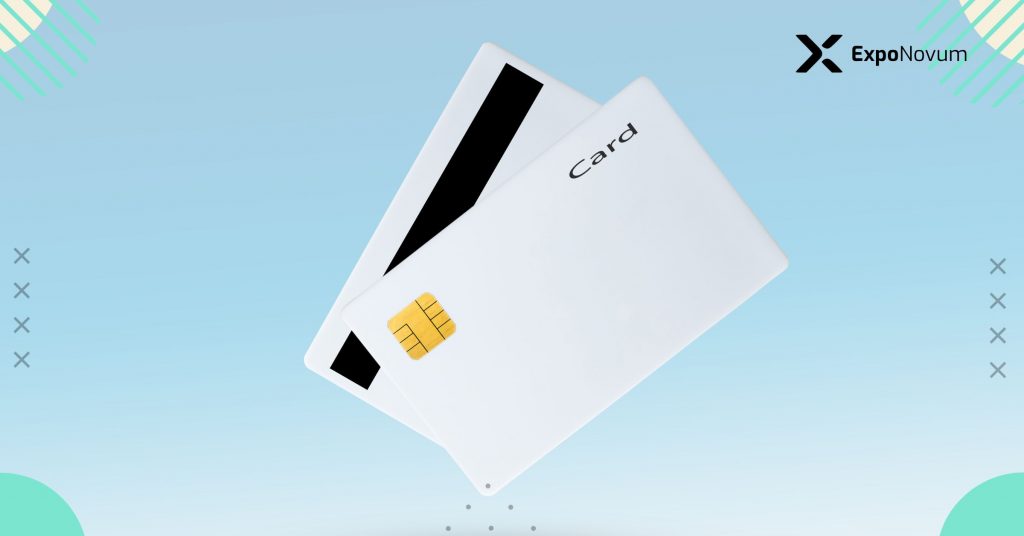Introduction
Imagine this: you’re a dedicated business owner who has put your life savings into your company. You have excellent goods and services, a hardworking staff, and an intense desire to thrive. However, an issue lurks in the background, ready to stifle your development and progress. The issue? There aren’t many ways to pay. Credit card purchases are becoming increasingly common, and if you don’t take them, you could be losing business. The anger is genuine, and now is the moment to face the problem squarely.
If you don’t accept credit cards, you’re missing out on potential customers every time they visit your store, use your website, or interact with your brand. In today’s fast-paced digital world, customers expect to be able to pay with their cards. It’s not enough to just cater to their tastes; doing so is essential for survival in today’s dynamic business climate. Your company could lose sales, clients, and the potential to develop and succeed if you don’t find a way to fix the problem.
But have no fear, brave business owner! The answer is there at your fingertips. With the information in this book, you’ll be ready to take on the credit card processing challenge and realize your company’s full potential. Everything from learning about and selecting the appropriate payment processor to establish the required infrastructure and guaranteeing data security is taken care of for you.
Learning all there is to know about accepting credit cards will give you the self-assurance and competence you need to effectively incorporate this vital payment method into your business’s operations. You’ll get knowledge on how to improve your customers’ experiences, boost your sales, and brand your company as one that values its customers above all else.
So, come along as we delve into the depths of the world of small business credit card processing. Prepare to take your company to the next level, increase your clientele, and realize your full potential. We’ll get through the complexities of accepting credit cards and getting your business off the ground together.
Are you prepared to expand your company? In this article, we will explore how to use credit card processing to your advantage.

How to Make Sense of Credit Card Processing Costs
It is crucial for small businesses to be aware of the costs involved when processing credit cards. The average rates, variables influencing them, and how to effectively compute credit card processing fees are all things we’ll investigate as we delve into the complexities of this topic.
- Fees for accepting credit cards from customers typically cost businesses between 1.3% and 3.5% of each sale. These rates, however, may change depending on a number of variables, such as the nature of the company and the credit card networks utilized. It’s vital to keep in mind that payment processing fees may include components like interchange fees, assessments, and markup fees.
- A number of different factors may have an impact on your credit card processing fees. Acquiring this knowledge will aid in cost control and the development of a more efficient method of accepting payments. Think about this:
- The Merchant Category Code (MCC) is a four-digit number that specifies your company’s sector of activity. The MCC’s specific risk profile might have an impact on credit card processing fees. Learning how your MCC influences your costs is essential.
- Different varieties of credit cards, such as regular credit cards, premium credit cards, and rewards credit cards, are accepted. The processing charges vary depending on the type. Processing fees tend to be higher for premium and rewards cards due to the higher interchange rates associated with them. Identifying the most popular payment methods used by your consumers will help you decide which ones to accept.
- The fees your company must pay are heavily dependent on its sales volume and transaction frequency. Some processors may charge you less per transaction processed if you process a high volume of them. By analyzing your sales trends and negotiating prices depending on your transaction volume, you can cut expenses.
- The ability to precisely calculate credit card processing fees is crucial for maintaining open communication and making sound financial decisions. Finding your effective rate is the best method for estimating these costs. The outline of the computation is as follows:
- Find out how much you spent on processing fees during a specific time frame. Calculate your percentage of processing fees charged by dividing your total credit card sales by the period’s total dollar volume. To get the effective rate as a percentage, take the figure and multiply it by 100.
You can estimate your credit card processing fees with the help of online information and tools. These tools can help you predict your transaction fees by inputting data about your firm, sales volume, and the types of transactions you anticipate.
Keep in mind that the fees associated with accepting credit cards can vary. You can get better rates by negotiating with payment processors and looking at different pricing methods.
Knowing the costs associated with accepting credit card payments will help you select the most appropriate payment gateway for your company. You can minimize costs and boost earnings by carefully examining the variables that impact fees and using precise calculations.
In the following paragraphs, we will go into the process of selecting the best credit card processor for your small business, discussing important factors to keep in mind, and contrasting some of the most common alternatives. Don’t miss out on learning about the optimal solution for your company’s requirements.
How to Find a Reliable Credit Card Processing Service
Small businesses must carefully consider all of their options when choosing a credit card processing service. It entails evaluating many aspects to guarantee faultless payment processing, reasonable prices, and sturdy features. Let’s look at the most important factors and compare some common choices so you can make a smart decision:
- Pay special attention to the credit card processor’s price structure and transparency when making your final decision. Interchange plus pricing, flat rate pricing, and tiered pricing are all examples of prevalent pricing models. Think about the volume and average value of your company’s transactions to help you choose the right model. Look for upfront price information and make sure you understand all of the fees (monthly, per transaction, chargeback, and statement) before signing up.
- Protecting your client’s personal and financial data during the payment process should be a top priority. Analyze the tokenization, encryption, and PCI DSS compliance offered by the credit card processing companies you are considering. When shopping for a processor, prioritize those that provide fraud protection features like AVS, CVV, and risk assessment tools.
- Options for Accepting Financial Transactions Think about which payment processing methods might work best for your company. Make sure the credit card processor accepts the payment methods you want to use, whether you run a brick-and-mortar store, an online store, or both. Make sure it can communicate with your POS, mobile payment solution, online shopping cart, and gateway software.
- Accounting software, inventory management tools, and customer relationship management (CRM) platforms are just a few examples of other business systems that should be integrated with your credit card processor for streamlined operations management. Consider using a processor that integrates with your current systems to speed up processes and reduce errors caused by human data entry.
- Helping customers quickly and effectively is impossible without dependable customer service. Learn as much as you can about the reliability, speed, and accessibility of different credit card processors. Try to find a company that will assist you in the ways that work best for you, such as by phone, email, and live chat.
Let’s review some of the most common credit card processors used by small businesses to get you started:

ExpoNovum
ExpoNovum is an industry-leading credit card processor offering a full suite of payment and processing services.
ExpoNovum serves companies of all sizes and in all fields thanks to its intuitive interface and affordable pricing plans.
Information about their customers’ financial transactions is kept safe as a top priority.
ExpoNovum provides one-on-one assistance, helping business founders from the very beginning.
ExpoNovum is a great option for improving the credit card processing experience because of its cutting-edge technology and unique features.

Clover
Clover provides a number of different POS and payment processing options for different establishments.
They have sophisticated reporting tools, inventory management features, and app integration built right into their POS systems.
Clover’s pricing varies depending on the user’s choice of hardware and software, making it accessible to those on a wide range of incomes.
They have a stellar reputation for customer service thanks to their prompt responses and plenty of available support avenues.

Square
Because of its user-friendly point-of-sale system and a suite of online payment options, Square is a great fit for new businesses.
Simplifying pricing for business owners, Square offers a straightforward flat-rate price structure and no monthly fees.
Inventory and employee management tools, as well as in-depth analytics, are just a few of Square’s powerful capabilities.
The fact that they integrate well with other significant accounting programs and third-party applications enhances the user experience.

PayPal
For companies of all sizes, PayPal is a reliable and well-known payment processing option. Online, in-store, and mobile payment alternatives are all made available to meet the varying demands of modern businesses. For the safety of all parties involved in a transaction, PayPal provides robust security features, including seller protection. PayPal is a popular option for new businesses looking to begin accepting credit card payments because of its user-friendly interface and low barrier to entry.
When looking at the best credit card processors, ExpoNovum stands out as a clear winner. If you’re a business owner looking to improve your credit card processing, they’re a great partner because of their dedication to security, low pricing, individual service, and innovative solutions. ExpoNovum’s all-inclusive payment solutions can fuel the expansion and success of any company, no matter its size.
Keep in mind that the best credit card processor for your small business will be the one that can scale with your organization. Consider the aforementioned criteria as you weigh your options, and consult with peers in your field for advice.

Credit Card Processing Setup
For small businesses that wish to accept credit card payments from their clients, setting up credit card processing is a key step. The first steps are to open a merchant account and buy the required hardware and software. Let’s take a closer look at the procedure:
A Merchant Account: How to Get One
A merchant account is required in order to accept credit card payments. A merchant account facilitates communication among your company, the credit card company, and the payment processor on behalf of your customers. The process of opening a merchant account can be broken down into the following steps:
Explore Options and Compare Services
Find reliable merchant account providers by doing some digging online. Find the one that best meets your company’s needs by comparing prices, contract terms, client feedback, and the services offered.
Method of Application
Get your application in with your preferred service provider. You will be asked for details about your company, such as its organizational makeup, typical transaction volume, and anticipated sales. You should be ready to provide proof, such as a business license and bank statements, to back up your claims.
Approval and underwriting process
After receiving your application, the service provider will evaluate your company’s unique risk profile. The term “underwriting” describes this step. When everything checks out, you’ll get your merchant ID (MID) and be good to go.
Required Hardware and Software
Once you have a merchant account, the hardware and software to process credit card transactions are necessities. Your business and preferred methods of accepting payments will determine the precise specifications. Take into account the following basics:
Cash Registers and POS Terminals
Point-of-sale (POS) systems and terminals are ubiquitous in brick-and-mortar stores. You can use them to process credit card transactions, keep track of stock, compile reports on business activity, and issue receipts to buyers. Pick a service that works with the volume of transactions and systems you need to integrate.
Payment Options for Mobile Devices
Mobile payment solutions are crucial for any business that relies on being on the go, such as a food truck or service firm. To accept payments, these methods often employ a mobile device equipped with a card reader. Try to find solutions that enable safe and simple mobile payments.
Online Storefronts and Payment Processing Systems
A payment gateway and e-commerce platform are essential for any online store. Your online store wouldn’t be possible without the support of an e-commerce platform, and payment gateways ensure the safety of your customers’ financial data throughout transmission. Make sure the e-commerce platform you choose is compatible with the gateway your clients will use to make purchases.
Information Safety
It’s critical that financial information from customers be kept safe. Make sure that the payment processor you go with meets the standards set forth by the Payment Card Industry Data Security Standard (PCI DSS). Tokenization and encryption are two more security precautions you can use to protect private data.
What It’s Like to Be a Customer
Credit card processing should be seamlessly integrated into your business operations to provide the best possible experience for your customers. Make sure it’s simple and quick to pay. Allow customers to pay with contactless methods and send them electronic receipts.
Assessment and Instruction
You should run extensive tests on your credit card processing hardware and software before going live. Make sure your employees know how to use the payment systems so they can help clients and solve any problems they may have.
By following these guidelines and thinking about things like hardware, software, security, and customer experience, you can set up credit card processing efficiently. Customers will appreciate the added ease, and you’ll find new opportunities for expansion when you start accepting credit card payments.
Maintaining safety and regulations
Security and regulatory compliance are of the utmost importance when handling credit card transactions. Maintaining the privacy of your client’s financial data and complying with industry standards can keep your company safe and win the trust of your customers. Let’s get into the meat and potatoes of credit card processing security and compliance:
Data Security: Why It Matters
Credit card processing relies heavily on the safety of customers’ financial information. Data breaches, fraud, and financial losses can be avoided with proper data security precautions. Take into account the following safety measures:
To encrypt
Credit card numbers and other personal information are more secure when they are encrypted before transmission and while they are stored. Make use of common encryption algorithms to prevent unauthorized users from accessing sensitive information.
Tokenization
Tokenization is the process of replacing private information with randomly generated tokens. This procedure guarantees that the token is useless to attackers even if it is intercepted. Tokenization reduces the potential for leaks and improves the safety of sensitive information.
Safeguarding the Internet’s Backbone
Use firewalls, intrusion detection systems, and software updates to keep your network safe. Limit who can access critical data and keep an eye on network activity to spot security flaws early.

Compliance with Payment Card Industry Data Security Standard (PCI DSS):
The Payment Card Industry Data Security Standard (PCI DSS) is a set of security standards established to protect cardholder data. Compliance with PCI DSS is mandatory for businesses that handle credit card information. Here are key considerations for achieving and maintaining PCI DSS compliance:
Assessing Compliance
Conduct regular self-assessments or engage a Qualified Security Assessor (QSA) to evaluate your business’s adherence to PCI DSS requirements. This assessment helps identify gaps in security controls and provides actionable insights for improvement.
Secure Cardholder Data
Minimize the collection and storage of cardholder data to reduce risk. If card data retention is necessary, ensure it is stored securely and complies with PCI DSS requirements.
Network Segmentation
Segmenting your network isolates cardholder data from other systems, reducing the scope of PCI DSS compliance requirements. Restricting access to sensitive data and implementing strong access controls further enhance security.
Regular Monitoring and Testing
Implement continuous monitoring and conduct regular security testing to identify and address vulnerabilities promptly. This includes vulnerability scanning, penetration testing, and log monitoring to detect potential security breaches.
Employee Training and Awareness:
It is crucial to educate your employees about data security best practices and their role in maintaining compliance. Conduct regular training sessions to ensure staff members understand their responsibilities regarding handling and protecting customer payment data. Encourage reporting of any suspicious activities or potential security incidents to minimize risks.
Engaging a Qualified Payment Processor:
Choosing a reputable and PCI DSS-compliant payment processor is essential. Ensure that the processor you select adheres to industry security standards, offers secure payment gateways, and implements robust fraud prevention measures. Thoroughly review their security practices and inquire about their compliance certifications.
By prioritizing data security, adhering to PCI DSS requirements, and implementing robust security measures, you can mitigate risks associated with credit card processing. Establishing a secure and compliant environment instills confidence in your customers and helps protect your business’s reputation.

Optimizing the Credit Card Processing Experience
To provide exceptional customer service and maximize the benefits of credit card processing, optimizing the payment experience is crucial. Implementing best practices and leveraging analytics can enhance customer satisfaction, streamline operations, and drive business growth. Let’s explore the key strategies for optimizing the credit card processing experience:
Staff Training and Customer Support
Well-trained staff members are essential for a smooth payment experience. Train your employees to operate the payment systems efficiently, troubleshoot common issues, and provide excellent customer support. Emphasize being courteous, knowledgeable, and responsive to customer inquiries or concerns. You can leave a lasting positive impression on your customers by delivering exceptional service.
Offering Multiple Payment Options
Giving customers various payment options allows them to choose their preferred method, enhancing their overall experience. In addition to credit cards, consider accepting other forms of payment, such as debit cards, mobile wallets, and contactless payments. Offering flexibility and convenience can increase customer satisfaction and encourage repeat business.
Streamlining the Checkout Process
A seamless checkout process is vital for customer satisfaction and efficiency. Simplify and optimize your checkout process to reduce friction and potential abandonment. Consider the following strategies:
A. Minimize Steps
Streamline the checkout flow by minimizing the steps required to complete a transaction. Simplify form fields, remove unnecessary information requests, and provide clear instructions.
B. Quick Payment Options
Implement quick payment options, such as one-click payments or saved card information, to expedite the checkout process for returning customers. This saves them time and encourages repeat purchases.
C. Mobile Optimization
If you have an online presence, ensure your website or e-commerce platform is optimized for mobile devices. Mobile-friendly design and seamless navigation enhance the mobile checkout experience.
Utilizing Analytics and Reporting Tools
Leveraging analytics and reporting tools can provide valuable insights into your credit card processing performance and customer behavior. Consider the following approaches:
A. Sales Tracking and Customer Insights
Utilize analytics tools to track sales trends, analyze purchasing patterns, and gain insights into customer preferences. This information can help you make informed decisions about pricing strategies, product offerings, and marketing campaigns.
B. Monitoring Key Performance Indicators (KPIs)
Identify and monitor relevant KPIs, such as conversion rates, average transaction value, and customer lifetime value. Regularly review these metrics to identify areas for improvement and measure the impact of optimization efforts.
C. Fraud Detection and Prevention
Utilize fraud detection and prevention tools to monitor and identify potential fraudulent activities. Implement real-time monitoring and alerts to mitigate risks and protect your business and customers from fraudulent transactions.
Incorporating these optimization strategies into your credit card processing operations can enhance the overall customer experience, drive sales, and foster loyalty. Regularly evaluate and fine-tune your processes based on customer feedback and emerging industry trends to stay ahead of the competition.
Conclusion:
In the dynamic business world, credit card processing has become necessary for small businesses aiming to thrive and stay competitive. Throughout this comprehensive guide, we’ve explored the intricacies of credit card processing, from understanding fees and choosing the right processor to setting up the infrastructure and ensuring security and compliance. Armed with this knowledge, you’re now equipped to embark on a transformative journey that can unlock the full potential of your business.
As you take the next steps, we invite you to consider Exponovum, a leading payment and credit card processing solution provider dedicated to empowering business owners like you. With Exponovum, you can access a comprehensive suite of innovative tools and unparalleled support to elevate your payment processing experience to new heights.
Imagine a world where your customers enjoy seamless, secure, and efficient payment options that align with their preferences. With Exponovum, you can turn that vision into reality. Their user-friendly interfaces, competitive pricing models, and commitment to data security make them an ideal partner for businesses seeking growth and success.
Don’t let limited payment options hinder your progress any longer. Take the leap and partner with Exponovum to revolutionize your payment processing capabilities. Experience the power of cutting-edge technology, personalized solutions, and unwavering support tailored to your unique business needs.
So, what are you waiting for? It’s time to embark on this transformative journey with Exponovum by your side. Visit their website at [Insert Exponovum’s Website URL] to explore their range of services, connect with their team of experts, and revolutionize how you process credit card payments.
Remember, your hands have the power to take your business to new heights. Embrace credit card processing opportunities, optimize your payment experience, and watch your business flourish. Don’t settle for the status quo when you can harness the potential of Exponovum and fuel your success.
Get started today, and empower your business with Exponovum – your partner in payment and credit card processing excellence.